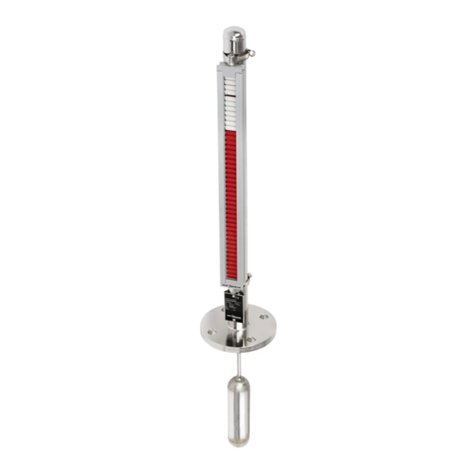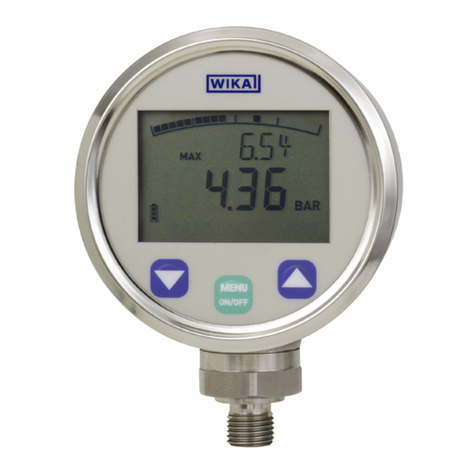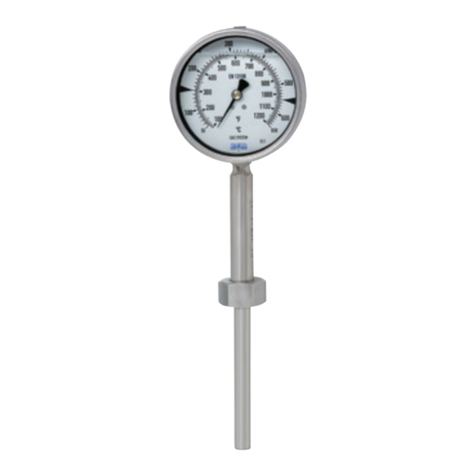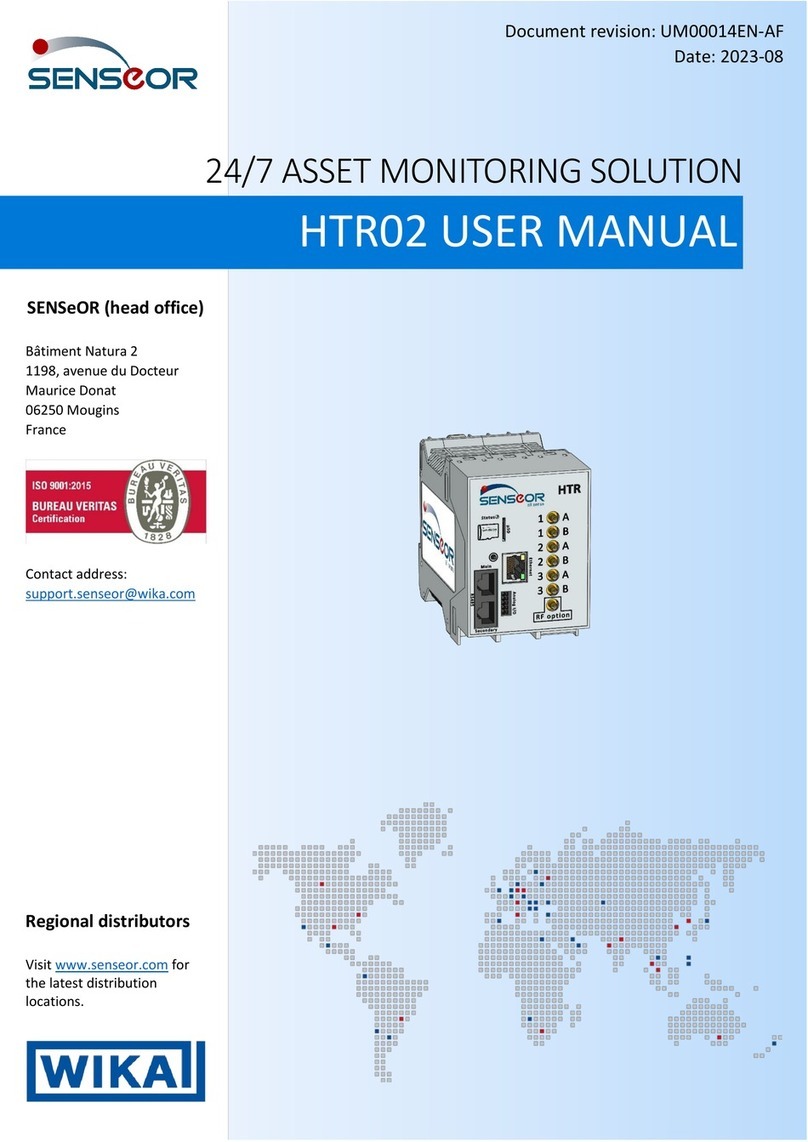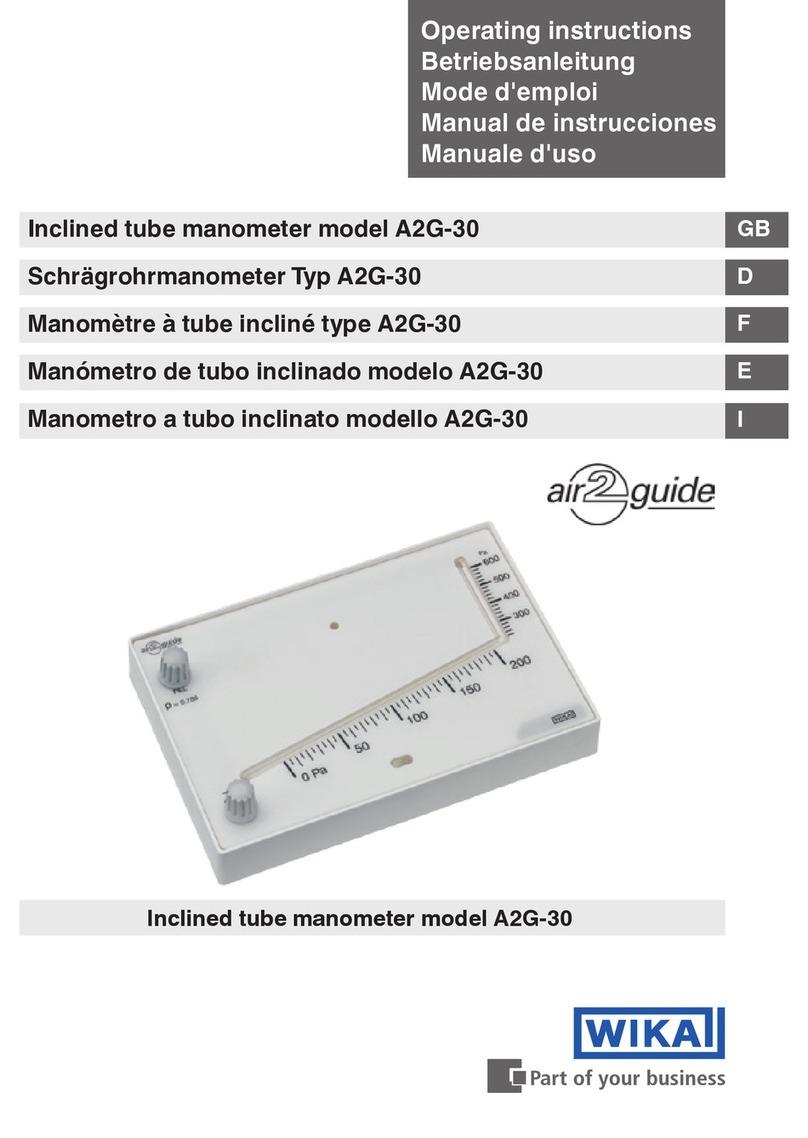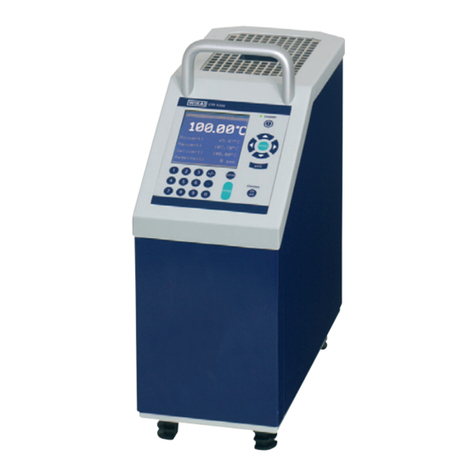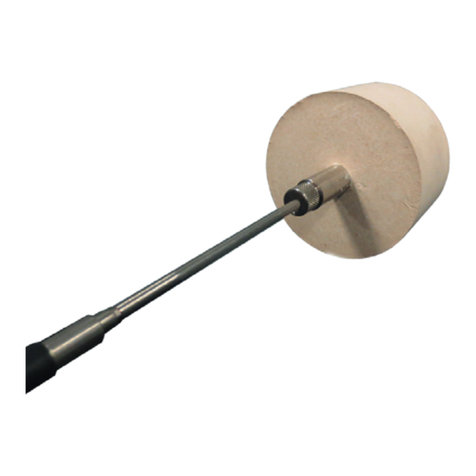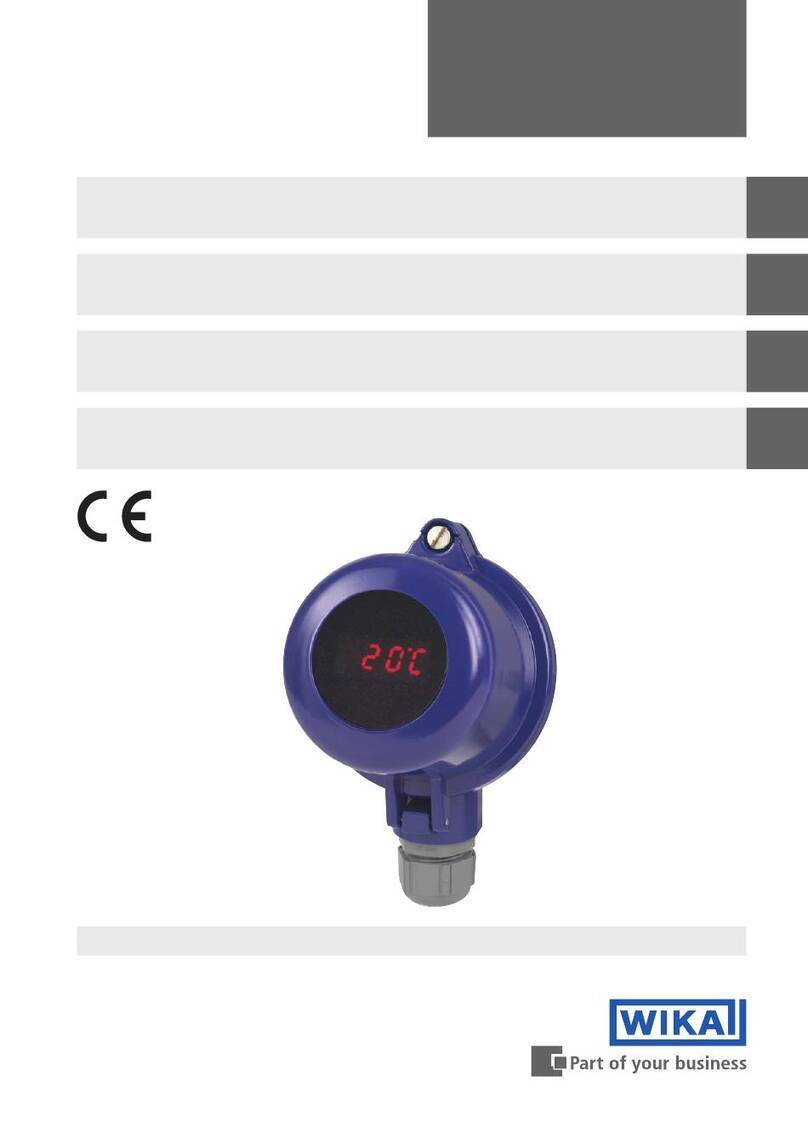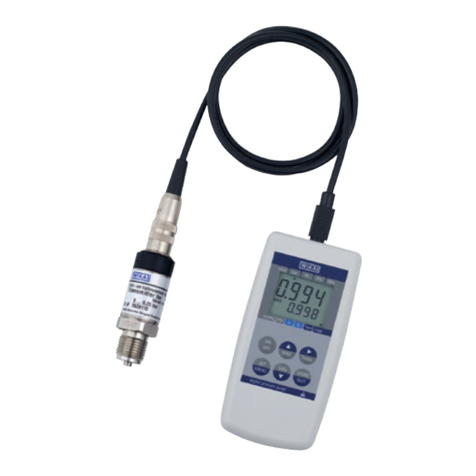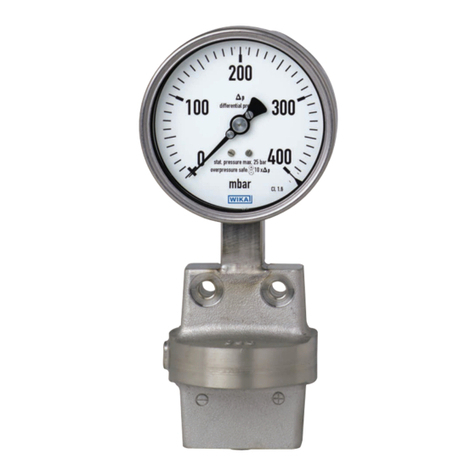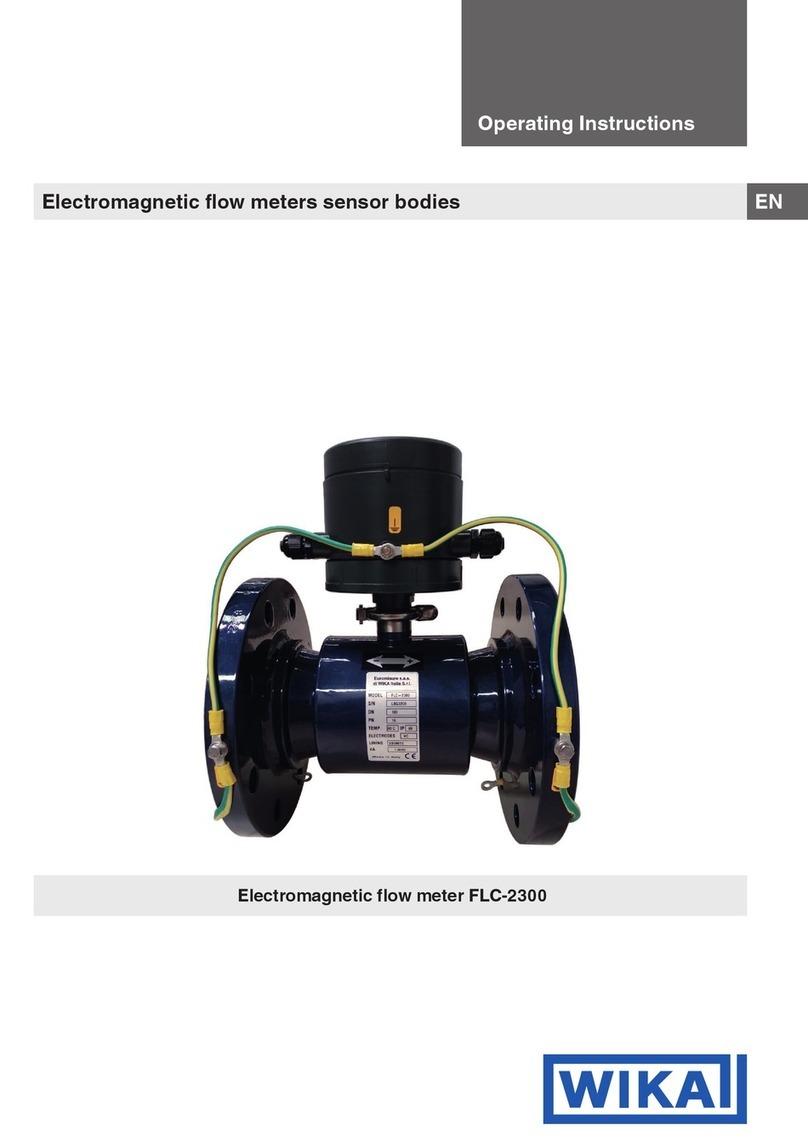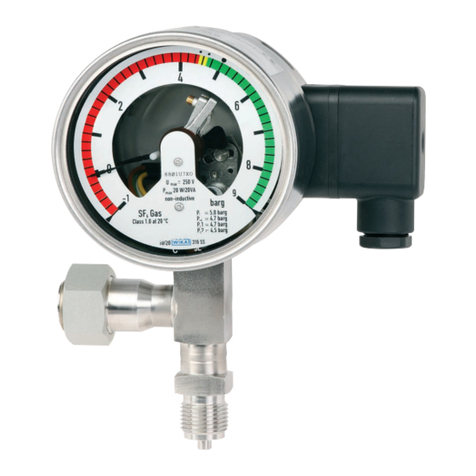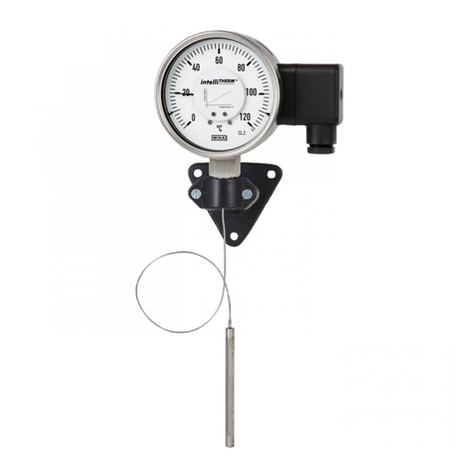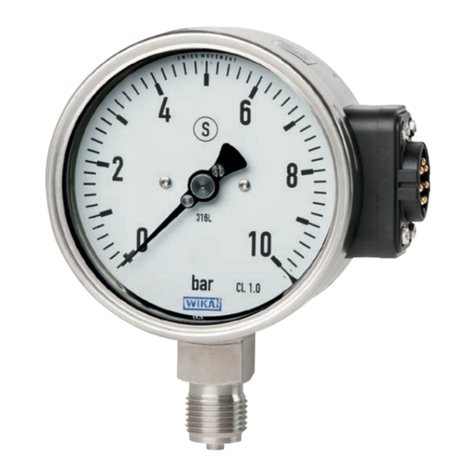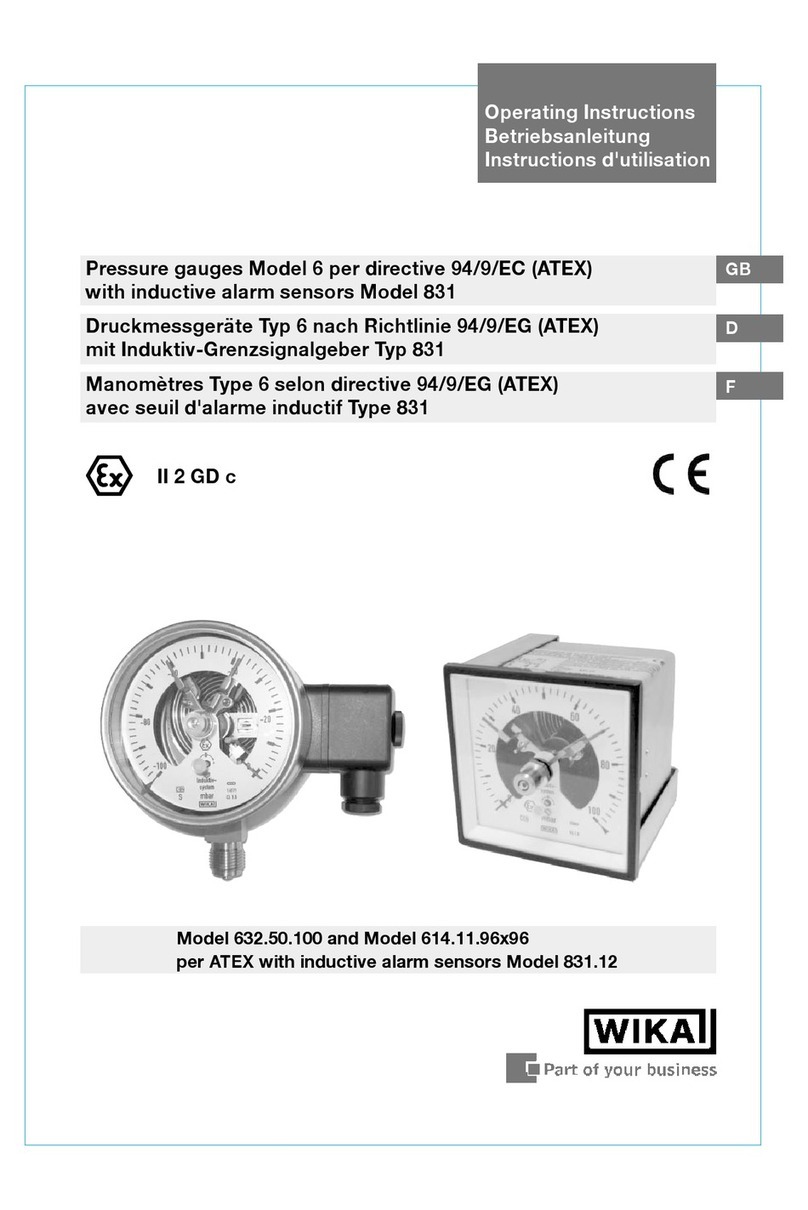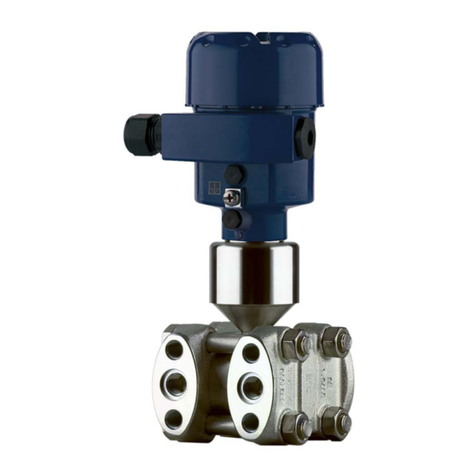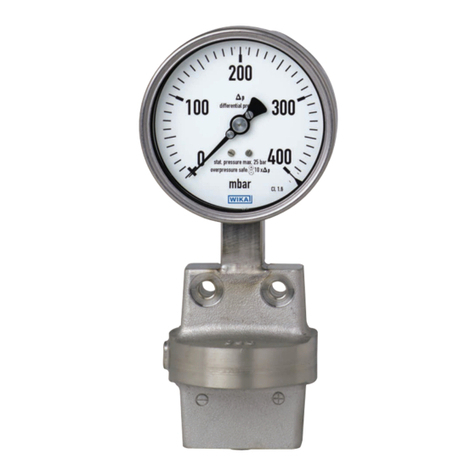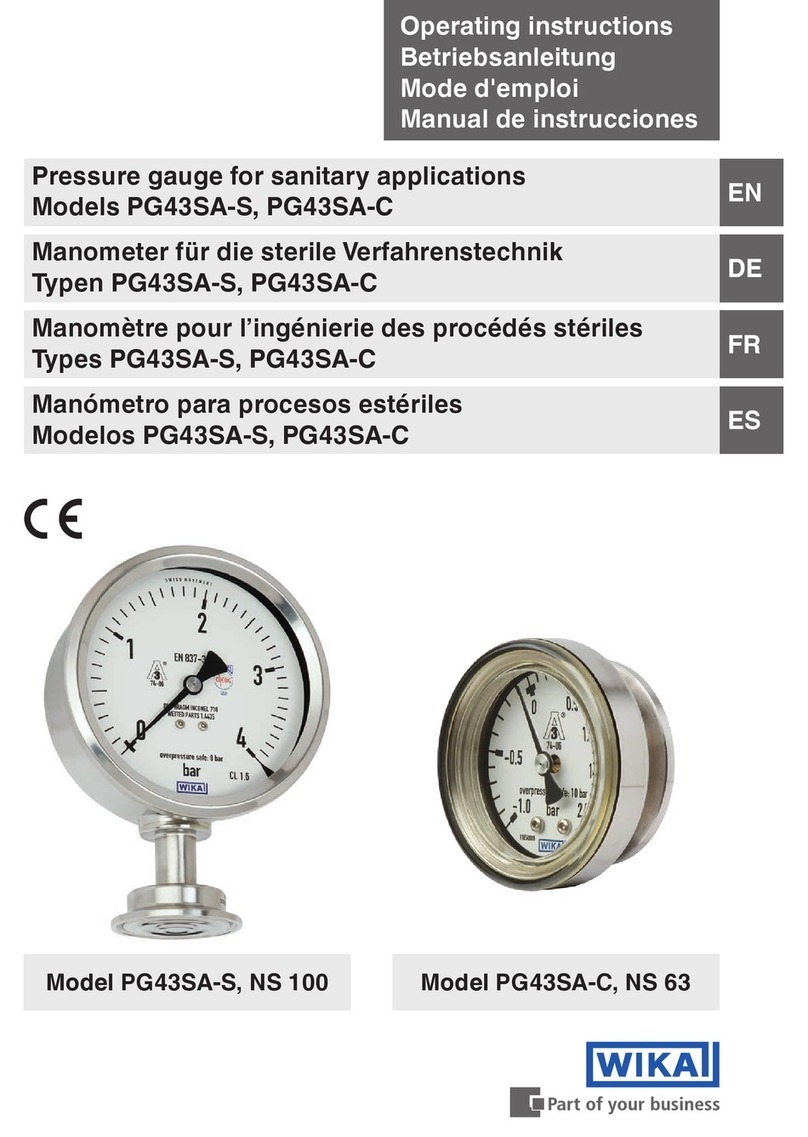
EN
Operating instructions capsule pressure gauge, model 63x.50 per ATEX 3
40433177.01 11/2020 EN/DE
Contents
Declarations of conformity can be found online at www.wika.com.
1. General information 4
1.1 Explanation of symbols ................................................................. 5
2. Safety 6
2.1 Intended use ................................................................................. 6
2.2 Responsibility of the operator........................................................ 7
2.3 Personnel qualification .................................................................. 9
2.4 Safety instructions for hazardous locations ................................. 10
2.5 Labelling / Safety marks .............................................................. 15
2.6 Ignition hazard analysis............................................................... 16
3. Specications 17
4. Design and function 18
5. Transport, packaging and storage 18
5.1 Transport ..................................................................................... 18
5.2 Packaging and storage................................................................ 19
6. Commissioning, operation 19
6.1 Mechanical connection ............................................................... 19
6.2 Requirements for the installation point ........................................ 20
6.3 Installation................................................................................... 21
6.4 External zero point setting (if available)....................................... 22
6.5 Permissible ambient and operating temperatures ....................... 22
6.6 Permissible vibration load at the installation site ......................... 23
6.7 Level check ................................................................................. 23
6.8 Commissioning ........................................................................... 23
7. Faults 24
8. Maintenance and cleaning 26
8.1 Maintenance ............................................................................... 26
8.2 Cleaning...................................................................................... 26
9. Dismounting,returnanddisposal 27
9.1 Dismounting................................................................................ 27
9.2 Return ......................................................................................... 27
9.3 Disposal ...................................................................................... 27
Annex: EU Declaration of conformity 54












